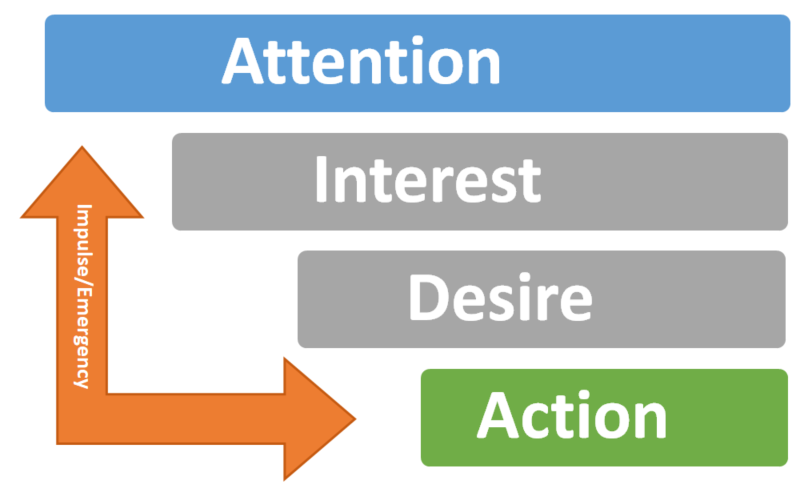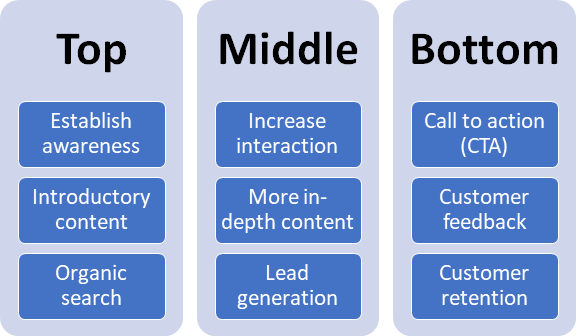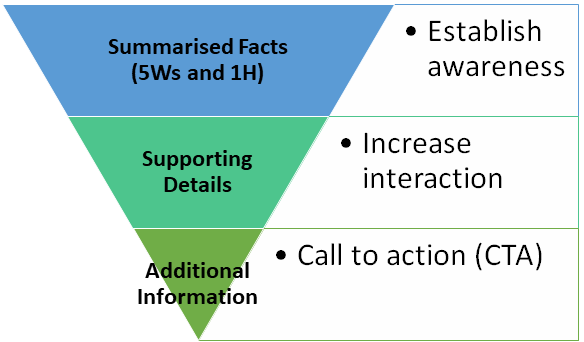Crafting a Content Marketing Funnel for Enhanced ROI
Marketers have an intriguing affinity for funnels— not the sort that simplifies pouring liquids into a container, but a unique kind of funnel capable of converting even the frostiest leads into paying customers. Envision it as a transformative device turning ordinary water into something more invigorating.
In simple terms, the marketing funnel delineates a customer's journey from brand awareness to purchasing and then returning for more. It outlines your business's strategic approach for every stage of the campaign. It's crucial to adhere to this roadmap faithfully and make necessary adjustments when shifts in the marketing landscape demand.
Although the ultimate objective might be boosting traffic or sales, the most critical success indicator is the return on investment (ROI). The key question is, does expenditure on the marketing campaign yield a profit? An ROI ratio of 2:1 (AUD$2 return for every dollar spent on marketing) signifies a gain, but experts advise targeting a minimum of 5:1. For effectively implementing this, partnering with a professional digital agency can be highly beneficial.

This is true for any funnel, including the topic of this blog post: the content marketing funnel. By this time, know that “content is king,” and that isn’t going to change anytime soon. Helpful content is the currency of modern SEO; paying the right amount leads to a slew of great things, from engaged readers to maximum ROI.
The AIDA model
Before delving deep into the specifics of developing one such funnel, it’s essential to get an idea of what a typical marketing funnel looks like. For that, go back in time—specifically 1898, in the shoes of an advertiser named Elias St. Elmo Lewis.
In a time when the term “content marketing” hasn’t existed yet, let alone become a buzzword, Lewis firmly believed in the potential of advertising to educate people. Based on his experience managing ad campaigns, he developed the slogan: “Attract attention, maintain interest, create desire, and get action.”
These underlined words would later form the tenets of a tried-and-true marketing model known as the Attention-Interest-Desire-Action (AIDA) Model. In fact, Lewis stressed that a campaign should pay the most attention to the first three steps; the fourth will come naturally.

Like a typical marketing funnel, the audience size shrinks with each progression. It makes sense, seeing that not everyone will take an interest in your product or service, let alone find a pressing need to buy it. Nonetheless, one successful action per level leads to the next, with the finish line being people making a purchase.
The AIDA Model was ground-breaking at the time it was conceived. But modern marketing doctrine already sees this as too simplistic, considering some customer journeys aren’t linear. For example, the model doesn’t account for impulse or emergency purchases, which see people jump from attention to action on a whim.

Even so, marketers swear by the sturdiness of the AIDA Model, even inspiring other models that consider nonlinear buying behaviour. A good example is this model from SEMrush, which simplifies the stages into three: the top, middle and bottom of the funnel. The model remains hierarchical but is now more flexible to cater to other types of purchasing behaviour.

Meanwhile, this model from Moz is a modified funnel because it adds retention to the process. The model explains that there’s no hard or fast delineation between the levels, which is another deviation from the AIDA Model’s linear nature.

Content types and metrics
Based on data from SEMrush, each level in this model features the most effective content types to create and the most suitable metrics. Below are the top five content types for each level, from most to least popular among marketers.
| Sparking Interest | Guiding and Educating | Propelling Conversions |
| How-to Guide | How-to Guide | Product Overview |
| Landing Page | Product Overview | Customer Review |
| Infographic | Case Study | Success Story |
| Checklist | Landing Page | Case Study |
| E-Book or Whitepaper | Webinar | Landing/Product Page |
This variation shows a staggered approach to delivering digestible information to the consumer. Content at the top of the funnel tends to be broader in scope as the business establishes itself as a thought leader in its industry. Direct advertising doesn’t typically happen at this stage, as the focus should be on getting people to believe in the business’ expertise.
As consumers show their intention to know more, they’re given middle-funnel content, which is more product-oriented. Qualitative and quantitative data become more involved in marketing, delivered in more formal content types like case studies and webinars. Of course, some may require more than numbers to be convinced.
Once the consumer is impressed enough with the product or service, it’s important to keep the initiative until the marketing results in a purchase. Although product overviews take the lead in this stage, customer reviews are no less crucial. Ask marketing experts, and they’ll tell you that nearly all buyers read reviews before buying.
Meanwhile, below are the most widely used content metrics for each level, again from most to least popular. A quick note: ROMI means the return on marketing investment.
| Sparking Interest | Guiding and Educating | Propelling Conversions |
| Visitor Count | Conversion Rate | Conversion Rate |
| Conversion Rate | Lead Count | Payment Transactions |
| Time on Page | Visitor Count | ROI/ROMI |
| Lead Count | Time on Page | Trial/Demo Requests |
| Bounce Rate | ROI/ROMI | Revenue |
Looking at how often a metric appears on this table, it’s safe to say that the most crucial metric is the conversion rate. Not only is it a common metric at all three levels, but it also consistently ranks within the top three. Why is that?
One reason is that conversion rate is inextricably linked to ROI. Suppose you spent USD$2,000 on content read by 10,000 visitors and generated a 5% click-through rate (CTR). The conversion rate, dividing the number of visitors by the number of click-throughs, is 5%, and your content marketing campaign spends USD$4 per conversion.
Now, for some reason, the content’s CTR dropped to 4% in the following month. The conversion rate also drops to 4%, and your campaign’s spending suddenly grew to USD$5 per conversion. A single percentage point change can mean a huge difference, especially if a campaign brings tens of millions to the business. As a business owner, you’d be understandably alarmed.
Refer to this chart for a rough idea of ROI fluctuations regarding conversion rates. The example from earlier will serve as the baseline (highlighted in yellow).
| Budget | Reader Count | CTR | Conversion Rate | Cost Per Conversion |
| USD$1,000 | 11,000 | 5% | 5% | USD$1.82 |
| USD$1,000 | 9,000 | 6% | 6% | USD$1.85 |
| USD$1,000 | 10,000 | 5% | 5% | USD$2.00 |
| USD$1,000 | 9,000 | 5% | 5% | USD$2.22 |
| USD$1,000 | 11,000 | 4% | 4% | USD$2.27 |
| USD$1,000 | 10,000 | 4% | 4% | USD$2.50 |
| USD$2,000 | 11,000 | 5% | 5% | USD$3.64 |
| USD$2,000 | 9,000 | 6% | 6% | USD$3.70 |
| USD$2,000 | 10,000 | 5% | 5% | USD$4.00 |
| USD$2,000 | 9,000 | 5% | 5% | USD$4.44 |
| USD$2,000 | 11,000 | 4% | 4% | USD$4.55 |
| USD$2,000 | 10,000 | 4% | 4% | USD$5.00 |
Lower spending with a lower budget is a given. Interestingly, content campaigns with higher conversion rates reduce cost per conversion amidst a lower reader count. Of course, it’s worth noting that having more readers also helps keep the costs low. When paired with an increase in sales, the overall ROI will more than justify spending for the campaign.

Building your funnel
Now that you know the workings of content marketing funnels, it’s time to build one. This part of the post will explain how to lay out respective strategies for each level in the funnel. These tips are relevant whether you use the AIDA Model or newer models as your funnel’s foundation.
- Conduct a funnel analysis
As mentioned, not all people will find a need to buy a product or service, and that’s normal. But when each level in the funnel is highly disproportionate, it might signify a bottleneck somewhere down the line.
Finding out where the problem lies requires conducting a funnel analysis. The process produces a clear picture of major drops in traffic along the conversion path, allowing marketers to adjust their strategies accordingly.
Here’s an example visualising the customer journey in an e-commerce store. Unfortunately, Excel’s default chart options don’t include a funnel chart, but a line graph will do just fine.

This graph shows a steep drop in traffic between the first and second steps. It makes you wonder if there are problems with the website stopping 60% of visitors from proceeding further. Content quality is a possibility, but it’s impossible to be sure without further thorough analysis.
For a more exhaustive analysis, you can consider making separate analyses of subgroups. Here’s the same chart, this time with an added line describing the journey of return buyers.

para156">Another viable option is to use third-party tools that produce detailed funnel analysis reports in real-time, though some are locked behind a paywall. Then again, they don’t require being more hands-on than generating Excel graphs, as they perform the math for you, including the conversion rate.
- Plan for customer retention
You probably already know what’s coming here. Customer acquisition and customer retention shouldn’t be trading blows at all. Both have their respective benefits and drawbacks.
Attracting new customers is important in its own right, namely because it’s the ideal way to grow the customer base. If you’re a start-up that just had its grand opening, you’d naturally want to focus on customer acquisition for the time being. Retention is impossible when there aren’t any customers to retain.
The problem arises when a business makes no effort to keep its patrons from leaving. The prevalent notion that getting new customers costs five times as much as keeping old ones isn’t always applicable but also tends to result in tunnel vision(not the eye disorder). Deciding between acquisition and retention shouldn’t be based on cost but on future value.

However, there are valid reasons to consider retention in building a content creation funnel. First, customers that regularly receive quality content from a business are less likely to look elsewhere unless they want a second opinion.
More importantly, existing customers can inspire new ones by leaving positive feedback or spreading the word. It costs nothing for them to do so, essentially giving the business free advertising (even if it costs something, it usually doesn’t cost much).
- Don’t always start at the top
No matter what the models earlier imply, beginning at the topmost layer isn’t necessarily the case. Experts agree it depends on how long a business has been doing business. For start-ups and small businesses, starting on the top and middle layers is ideal; for those who have been around for at least five years, focusing on the bottom and retention layers is more important.
But some experts believe it should be the other way around. Established companies should focus on enhancing awareness, while start-ups and small businesses should prioritise lead generation. Others recommend starting from the bottom and working their way up in most situations to take advantage of the lower competition.
So, which is it? As with most aspects of marketing, the answer is: “It depends.” What does your content funnel hope to achieve? Increase brand visibility? Help customers make more informed choices? Get them to buy your product or service?

The table above summarises everything you need to do and focus on in the funnel. How you go about it depends on your business’ goals. Remember that a start-up or small business’ goals differ from those of a corporation business.
- Get more angles in fewer channels
Marketers produce and publish various content types for each layer, but experts advise care when going for multiple types. The equipment and time required to make them can end up hurting your bottom line if you don’t plan out your content strategy. For example, creating a
stunning infographic needs, among other things, image editing hardware and software - and the skills necessary to use them properly.
Experts say it’s better to have fewer channels that can show more angles than the other way around. Some content types are versatile enough to do this, namely the venerable blog post. Modern content writing is already based on a pyramid structure, so integrating a similarly-shaped content funnel (funnels are basically inverted pyramids, anyway) shouldn’t be hard.

Here’s one case in point: The inverted pyramid style sees as much use in creating written content as in news reports. Press releases, product pages and announcements—a lot of marketing content is written this way. The result is a piece that incorporates all three content funnel stages.
- Get people to be aware of what you’re offering by summarising the facts of the blog post, preferably by answering the 5Ws (Who, What, When, Where, and Why) and 1H (How). The How can also be answered throughout the post.
- After piquing the readers’ interest, maintain the momentum by explaining each fact in detail. Be careful not to bombard them with jargon or too much information, as the brain can only take in and process so much (more on this later).
- End the piece with a strong CTA. Employ a combination of suitable command words and emotionally-provocative ones. If running a limited-time promo, use the fear of missing out (FOMO) to your advantage.
Blog posts are also one of the least resource-intensive content types. A good word processing software like Microsoft Word is recommended, but something simple (and free) like Notepad works too. The posts can appear as how-to guides, listicles, commentaries, and more.
Keeping content production costs to a minimum drives ROI up.
- Consider customer sentiments
Meticulous planning and well-produced content won’t matter if either doesn’t consider how a customer feels while consuming it. Most marketers agree that tugging a person’s heartstrings at the right time is one of, if not, the best things any marketer can do.
This is because most purchases are driven by emotion instead of reason - around 95% of the time, according to Gerald Zaltman, professor emeritus at Harvard Business School. Humans are emotional, first and foremost, so this purchasing behaviour makes sense. Otherwise, there wouldn’t be an urge to buy things out of the blue.
This also explains why you shouldn’t put too much information in your blog post. The further readers get to the post, the more likely they’ll start feeling confused or stressed, as they’ll be swamped with options. It’s crucial to be aware of emotional negatives at each funnel level.

To ensure your content doesn’t deliver the wrong idea, experts advise always communicating with customers or the sales teams that regularly deal with them. Surveys are instrumental in knowing how customers feel.
Conclusion
Developing content marketing funnels is no easy task, but it’s necessary to thrive in the modern business environment. Today’s consumers expect the internet to answer most, if not all, of their queries, and providing such answers is only possible with a well-planned-out funnel. Learn from the experts of advertising past and present to gain a competitive edge in the future.
We here at Pursuit Digital understand the importance of maximising ROI. After all, it’s what we focus on instead of some “vanity metric.” To know more about how we work on ensuring a huge return for every dollar spent on marketing, contact us today. If you aren’t aware of your ROI, you aren’t aware of just how well your business is doing.
